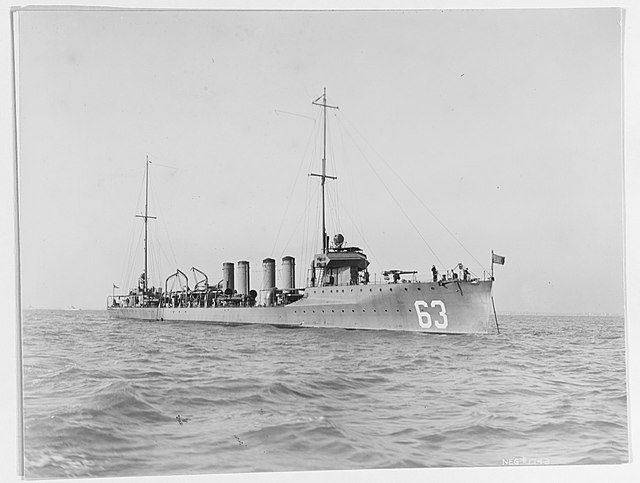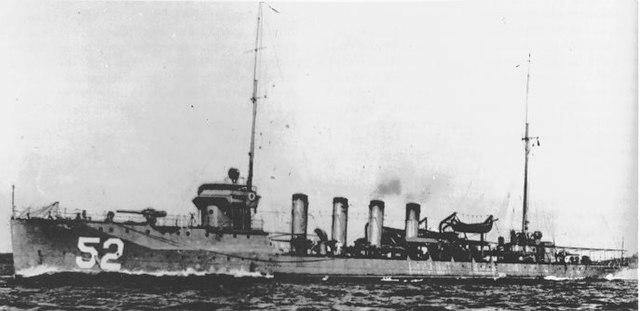The Sampson-class destroyers served in the United States Navy during World War I. Commissioned in 1916 and 1917, the class was a modification of the O'Brien and Tucker classes, with the number of 21-inch (533 mm) torpedo tubes increased from four twin-mounts to four triple-mounts. The Sampsons were the final six ships of the 26 "thousand tonner" destroyers. They were the largest and most heavily armed of the "thousand tonners", and the subsequent "flush deck" classes differed mainly in hull design and the engineering plant.
USS Sampson
The O'Brien class of destroyers was a class of six ships designed by and built for the United States Navy shortly before the United States entered World War I. The O'Brien class was the third of five classes of destroyers that were known as the "thousand tonners", because they were the first U.S. destroyers over 1,000 long tons (1,016 t) displacement.
Lead ship of the O'Brien class, USS O'Brien
O'Brien class member Ericsson, between the closely related Tucker-class ships Jacob Jones (left) and Wadsworth, is moored by destroyer tender Melville at Queenstown, Ireland, in 1917.
O'Brien, in dazzle camouflage, escorting a convoy in 1918
Nicholson





